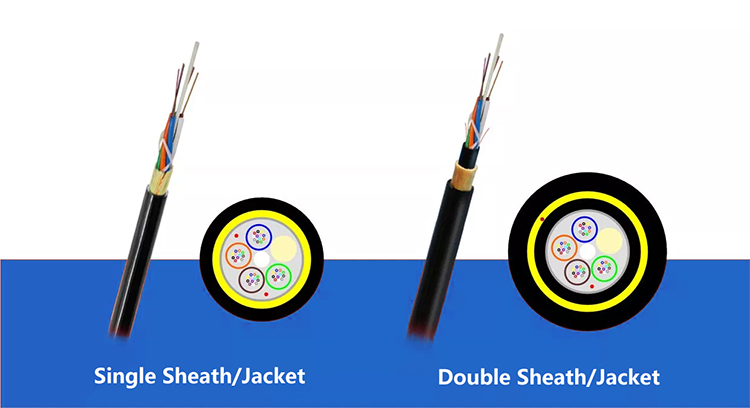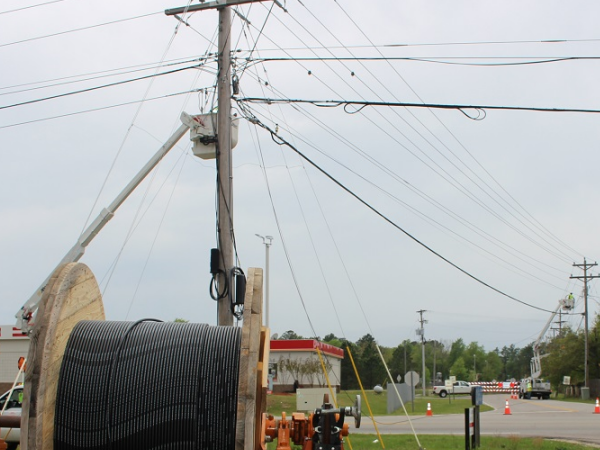As the construction of smart grids continues to advance, ADSS optical cables (all-dielectric self-supporting optical cables) are an indispensable part of power communication networks and play an increasingly important role. However, the installation process of ADSS optical cables is not easy. It involves multiple key technical links and also faces many challenges. This article GL FIBER will explore the key technologies and challenges in the installation process of ADSS optical cables in depth, in order to provide a reference for relevant practitioners.

1. The installation of ADSS optical cables first requires a comprehensive consideration of the conditions of the installation environment.
This includes the weather conditions, topography, and surrounding buildings and pipelines at the location of the optical cable. Since ADSS optical cables are usually installed on overhead power lines, it is necessary to ensure that they can withstand their own gravity, wind loads, and possible severe weather conditions. Before installation, the mechanical strength of the optical cable needs to be fully tested to ensure that it has good performance. At the same time, it is also necessary to reasonably select installation methods and equipment, such as installation vehicles, cranes and winches, according to factors such as the length and tension of the optical cable. These equipment must be operated and debugged by professionals to ensure the installation quality and safety of the optical cable.
2. During the installation process, the selection of the suspension point of the optical cable is a key technology.
Since the ADSS optical cable is installed on the same pole as the high-voltage power line, its surface must not only be resistant to ultraviolet radiation, but also withstand the test of high-voltage and strong electrical environment for a long time. Therefore, when selecting the suspension point, the capacitive coupling effect between the optical cable and the high-voltage phase line and between it and the earth must be comprehensively considered to avoid the optical cable from being subjected to a stronger electric field. This usually requires the use of professional software to calculate the spatial potential distribution on the power pole tower and draw an electric field strength distribution map. Based on this scientific basis, the specific suspension point of the optical cable on the pole tower is determined.
3. Special attention should be paid to the problem of electrical corrosion during the installation of ADSS optical cables.
Optical cables exposed to the external environment for a long time will accumulate soluble salts and dust on the surface, forming a semi-conductive dirt layer, which will cause the surface resistance of the optical cable to decrease. Under the action of a large induced potential, leakage current will be triggered, resulting in dry-band arcs and inducing electrocorrosion problems. This will not only destroy the transmission performance of the optical cable, but also pose a great safety hazard. In order to prevent electrocorrosion, it is necessary to reasonably select the optical cable hanging point to reduce the probability of electrocorrosion. At the same time, special anti-electrical trace sheath materials can also be used to extrude the outer sheath of the optical cable to reduce the strong electric trace corrosion on the surface of the optical cable.
4. In addition, there are some special challenges when installing ADSS optical cables.
For example, in areas with dense forests or complex terrain, optical cables are easily bitten by rodents, resulting in cable sheath damage or even fiber and cable breakage accidents. To address this problem, measures such as rodent-proof protective covers can be used for protection. However, since most ADSS lines are laid overhead and have a wide span, the complexity of the terrain and environment poses a considerable challenge to the continuous construction of rodent-proof protective covers. Therefore, before construction, it is necessary to conduct a detailed survey of the line, formulate a targeted construction plan, and select appropriate construction equipment and materials to ensure construction quality and efficiency.
5. In addition to the above challenges, ADSS optical cables also need to pay attention to the stress characteristics and operating conditions of optical cables during installation.
Since optical cables are affected by various external forces during use, such as wind force and temperature, they need to be reasonably mechanically designed and calculated. By using advanced computer software for simulation and calculation, it can be ensured that the optical cables have sufficient mechanical strength during installation and can operate stably under various environmental conditions.

In summary, the installation process of
ADSS optical cables involves multiple key technical links and also faces many challenges. In order to ensure the installation quality and performance of optical cables, comprehensive consideration and planning are required from multiple aspects such as environmental preparation, equipment selection, suspension point determination, electrical corrosion prevention, and special challenge response. Only in this way can we ensure that ADSS optical cables play a greater role in power communication networks and contribute to the construction and development of smart grids.


